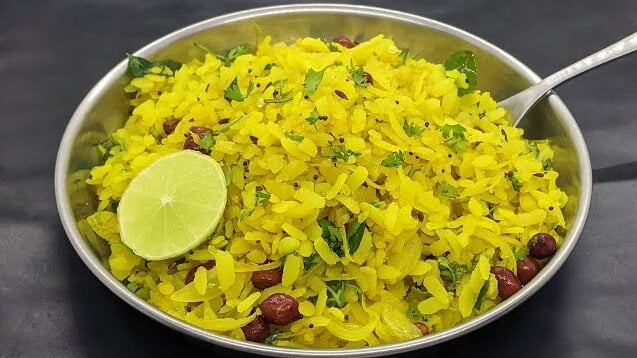Pesto Pasta Recipe
Pesto Pasta Recipe
If you're a fan of Italian cuisine, then you must try the delightful and aromatic dish known as pesto pasta. This classic recipe combines the freshness of basil with the richness of Parmesan cheese and pine nuts. In this article, we'll take a closer look at the origins of pesto pasta, the required ingredients, step-by-step instructions, variations you can explore, tips for the perfect pasta, its health benefits, and some frequently asked questions. Get ready to indulge in a burst of flavors with this mouthwatering pesto pasta recipe.
What is Pesto Pasta?
Pesto pasta is a traditional Italian dish that combines pasta with a vibrant and flavorful sauce called pesto. Pesto is made by blending fresh basil leaves, garlic, Parmesan cheese, pine nuts, and olive oil into a smooth and aromatic paste. When tossed with cooked pasta, it creates a harmonious marriage of textures and tastes, making it a popular choice among pasta lovers.
History of Pesto Pasta
Ingredients Required
To make a delicious pesto pasta, you'll need the following ingredients:
- 2 cups fresh basil leaves
- 3 cloves of garlic
- ½ cup grated Parmesan cheese
- ¼ cup pine nuts
- ½ cup extra virgin olive oil
- ½ teaspoon salt
- ¼ teaspoon black pepper
- 12 ounces of pasta of your choice
Step-by-Step Instructions
Making Pesto Sauce:
In a blender or food processor, add the basil leaves, garlic cloves, grated Parmesan cheese, pine nuts, salt, and black pepper.
Start blending on low speed and gradually drizzle in the extra virgin olive oil until the mixture forms a smooth and creamy consistency.
Cooking the Pasta:
Bring a large pot of salted water to a boil.
Add the pasta to the boiling water and cook according to the package instructions until al dente.
Drain the cooked pasta, reserving a small amount of the cooking water.
Combining the Pesto and Pasta:
In a large mixing bowl, add the cooked
Combining the Pesto and Pasta:
In a large mixing bowl, add the cooked pasta.
Spoon the prepared pesto sauce over the pasta.
Toss gently to coat the pasta evenly with the sauce.
If needed, add a small amount of the reserved pasta cooking water to loosen the sauce and create a creamy consistency.
Taste and adjust the seasoning with salt and pepper, if necessary.
Variations and Additions
Adding Protein:
To make your pesto pasta more filling and nutritious, consider adding grilled chicken, sautéed shrimp, or cooked Italian sausage.
Cook the protein separately and mix it into the pasta after combining it with the pesto sauce.
Incorporating Vegetables:
Enhance the nutritional value and add more flavors by incorporating vegetables into your pesto pasta.
Sautéed cherry tomatoes, roasted bell peppers, or steamed broccoli florets make excellent additions.
You can either mix the vegetables with the pasta or serve them as a side dish.
Experimenting with Different Pasta Types:
While traditional pesto pasta is often made with spaghetti or linguine, don't be afraid to try different pasta shapes and types.
Fusilli, penne, or farfalle are great alternatives that can hold the pesto sauce well and provide unique textures.
Tips for a Perfect Pesto Pasta
Use fresh and high-quality ingredients, especially basil leaves, as they are the star of the dish.
Toast the pine nuts lightly before blending them to enhance their flavor.
If you prefer a creamier sauce, you can add a tablespoon or two of heavy cream to the pesto mixture.
Reserve some pasta cooking water to adjust the consistency of the sauce if it becomes too thick.
Serve the pesto pasta immediately to enjoy its freshness and vibrant flavors.
Health Benefits of Pesto Pasta
Pesto pasta offers several health benefits, thanks to its wholesome ingredients:
Basil leaves are rich in vitamins A, K, and C, and they provide essential minerals like calcium, iron, and magnesium.
Olive oil, a key component of the pesto sauce, contains heart-healthy monounsaturated fats.
Pine nuts are a good source of protein, dietary fiber, and healthy fats.
The inclusion of garlic in pesto adds anti-inflammatory and immune-boosting properties.
The pasta itself provides a good source of energy, complex carbohydrates, and some essential nutrients.
Serving and Presentation
To serve your pesto pasta in an appealing way:
Garnish with a few fresh basil leaves and a sprinkle of grated Parmesan cheese.
Drizzle a little extra virgin olive oil on top for an added touch of richness.
Serve with a side of garlic bread or a fresh garden salad for a complete meal.
on the package to achieve the desired texture.
Conclusion
In conclusion, pesto pasta is a delightful Italian dish that combines the freshness of basil, the creaminess of Parmesan cheese, and the nuttiness of pine nuts. With its vibrant flavors and versatile nature, pesto pasta has become a favorite among pasta enthusiasts worldwide. Whether you choose to make your own pesto sauce or opt for a store-bought version, this recipe offers a burst of flavors that will leave you craving more. Explore different variations, add your favorite proteins and vegetables, and enjoy this classic dish that captures the essence of Italian cuisine.



Comments
Post a Comment